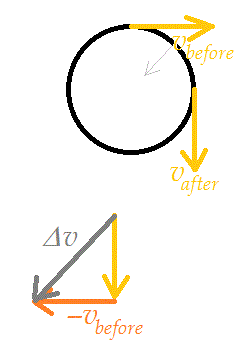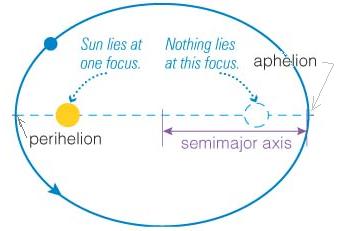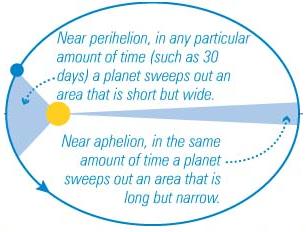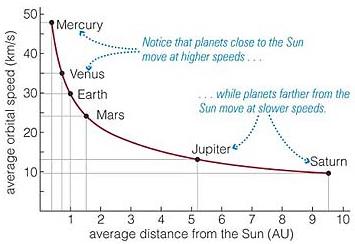



|
| About Marshall Future Students Current Students Alumni Faculty/Staff |



|

|
|
|||||
|
PS.122 Links:
» PS.122 home - - - Unit 1 - - - » topic 1 » topic 2 » topic 3 here! ⇒ - - - Unit 2 - - - » topic 4 » topic 5 » topic 6 - - - Unit 3 - - - » topic 7 » topic 8 » topic 9 - Off-Campus Sites -
» physicsforums
|
Physics For Teachers (PS.122 - §203, 2018 Spring => CRN 4619)
Class Meets in : Science 179 ... Tue & thRs 3:00pm - 4:50pm My office: Science 159 (below ramp to 3rd Ave) e-mail : foltzc @ marshall.edu phone : (304) 696-2519 Topic 2 (Rates - especially momentum & velocity) Quiz 3 was thRs.Sep.26 ... here's my grading key jpg
| |||||||||||||||
|
Force is exerted by something Outside the system
the active subject in the sentence describing what happened. . . . applied to the (passive) object inside the system so each Force vector (arrow) must pierce the system boundary. . . . it is the total external Force , added directionally , that is important net Force means what remains after they've all been summed ; ... Forces tend to oppose one another , canceling . . . . represent each Force that is applied to the object as an arrow pointing in the direction that the Force is pulling (or pushing) and with length that shows how strong that Force is ... decide which is positive and which is negative! . . . the special situation of zero net Force is called "equilibrium" Forces cancel => acceleration is zero => velocity is constant |  |
each Force has a nameable cause
which depends on a particular property.
. . . gravity pulls any mass that is immersed in the gravity field downward
around here, the gravity field has 9.8 N/kg intensity.
... each kilogram is pulled with a 9.8 Newton Force.
... (a few percent different at different places)
on our Moon's surface, gravity's intensity averages 1.62 N/kg
... (a few percent different at different places)
. . . Surface Forces push outward, strong enough to keep the object from penetrating it
(they do compress slightly, depending on how hard the surface is - spring-like!).
the surface Area pushes straight out thru it (perpendicular = "Normal")
. . . a spring pulls inward depending on how far it has been stretched
stiffer springs pull harder, for the same stretch distance.
to stretch a spring, you need to pull outward on both ends
... this Tension makes the spring material deform
. . . compression springs (in click pens) push outward (stretch is negative)
with strength that increases with how far they've been compressed
. . . Tension Forces pull inward, hard enough to keep from breaking
(they do stretch slightly, depending on their stiffness - spring-like!).
... ropes and cords usually have much less mass than the object they are tied to, and stretch very little (neglect it)
... so Tension is essentially the same all along that rope.
most of the time, one Force (gravity's Force) pulls an object down onto the table
. . . the table deformed a wee bit as the object was placed onto it, until it pushes outward just strong enough
that the surface Force upward (+) just cancels gravity's Force downward (−)
the table will deform much farther if the object is thrown onto its surface
. . . so the table pushes it up much harder than gravity pulls it down
and the ball accelerates upward until the table stops pushing it so hard.
except for gravity's Force (and later electric and magnetic forces),
these can all be identified by contact
the subject pushing the object (which is being watched).
. . . each side of the contact surface pushes thru the contact Area, into the other side
equal strength Forces, in opposite directions
. . . these pairs of Forces are applied to different things (object c.f. subject)
so you do not add them to get a (zero) total Force.
. . . (if both are inside your system , neither pierces the system boundary
so neither accelerates the system's c.o.m. ... make your system smaller!)
Friction Force often "Accidentally" Cancels another Force
friction Forces tend to resist sliding
that is, they oppose the slide.
. . . if the pushing subject can only move so fast, then
the pusher will often push at constant velocity for a while
... zero acceleration implies zero total ("net") Force.
they started it moving by pushing stronger (so, +'ve net Force) for a little while, to give it some momentum (mv),
... but let it stop by pushing weaker than friction (so, −'ve net Force) until is slows to a stop.
from very beginning to very end (stopped to stopped) is zero average net Force.
. . . wind resistance & water resistance Forces (both viscous and drag)
are stronger for faster speed thru the fluid
... speed increases until the other (imposed) Force gradually becomes cancelled.
bigger size objects encounter more resistance, if at the same speed
... because they hit more wind (or water) as they travel
so fluffy objects achieve slower terminal (equilibrium) velocity.
|
recall : velocity includes direction . . . represent as arrows
. . . change in velocity . . . Δ v = vafter − vbefore even though the speed is the same, Southward is not the same as Eastward! the diagram is top view of an object moving clockwise around a circle . . . "subtract" means "add the opposite" . . . the "additive inverse" is the negative ... (that's where negative numbers come from!) the opposite of Eastward is Westward so we should add Westward to Southward . . . . add vectors tail-to-tip, like road-trip "directions" or connect-the-numbers drawing game the change in velocity during this ¼ circle is 1.41 |v| to the South-West (check that by using Pythagoras: c² = a² + b² ) it needs to remove the original Eastwardness as well as have all the Southwardness leftover. = Δv points toward the circle's center during that time span. |  |
Large circles take a long time to travel Around
Time for one complete go-round is called the (repeat time) Period ... usual abbreviation T .
. . . total distance around is circumference = 2 π r = π·diameter .
from v = d / Δt , Δt = d / v
¼ circle will take Δt = π r / 2 v . . . (<=right?)
. . . acceleration a = Δ v / Δ t . . . substitute formulas to get
a ≈ 1.41 |v| 2 v / π r
. . . the 2·1.41/π = 0.9 is not exactly 1 here only because ¼ circle is very coarse to calculate Δv from
=> acentripetal = v ² / r . . .
example: bucket of water overhead
suppose you try to swing a bucket filled with water all the way around in 1 second.
. . . using your shoulder as a pivot, the water is about 1 meter from that center.
speed ≈ d/Δt = 2 π r / T ≈ 6 (1m) / (1s) ≈ 6 m/s .
(1 gal ~ 4 liter would have KE = ½ (4kg) (6m/s)² = 72 J + PE = (4·10 N)(1m), so be careful!)
a = v² /r = (6m/s)² /(1m) = 36 m²/s²m = 36 m/s² .
. . . it does not need to go this fast to stay in the bucket, because gravity only provides 9.8 m/s²
your shoulder will need to provide the other 26.2 m/s² acceleration.
at ½ this speed, a is ¼ as quick ... 9 m/s² ... water falls quicker than bucket
. . . or you can use a slower speed with a much shorter radius (notice: speed counts twice)
½ the speed (3m/s) with ¼ the radius again makes a = 36 m/s² .
... but takes ½ as long because the path is so short.
Force Applied 90° to velocity changes the object's path (deflects) , not its speed
Consider swinging a bucket of water around you, in a horizontal circle
hold one end of rope above your head, the bucket on the other end moving at wist level.
. . . The rope Tension does no Work . . . so can not change the bucket's KE .
change the speed of a bucket by pulling along the curved path
. . . caused Force (e.g. string) does not need to point to the center
it is the net Force that causes acceleration
so string + gravity will point inward to circle center (horizontal circle)
. . . "centripetal Force" IS NOT ANY FORCE'S NAME !
name each Force by its cause ...
even if centripetal acceleration is its effect .
. . . triangles of string Tension along the diagonal
show that part cancels weight (Force by gravity downward)
and some causes centripetal acceleration (horizontal).
if you draw a Force triangle to scale you can verify each portion.
the property that gravity influences (mass) is the same property that causes it.
but the cause M is the subject while the the influenced m is the object.
. . . the full formula for the Force that Earth's gravity applies to an object ... replace "g" with its formula above
=> F = m G M / d ² .
Every Mass (even You) Causes a Gravity Field
. . . but only humungous masses have noticeable gravity .
example: 70 kg student ... what gravity do they cause at 1m distance
. . . find, on your calculator, the EE or Exp button
I get 467E−11 [N/kg] = 4.67E−9 [N/kg]
really small compared to Earth's 9.8 [N/kg].
=> but not zero!
Force Increases with Proximity ... 2× as Close , 4× as strong
. . . ½ as far means d = ½ m ... so d² = ¼ m² .
4.67E−9 [Nm²/kg] / (¼ m²) = 18.68E−9 [N/kg]
closeness counts twice!
. . . we should check the Sun's gravity out here at Earth distance:
(66.7E−12) (2E30 [kg]) / (150E9 m )²
=> gby Sun = 5.93E−3 N/kg . . . 0.006 N/kg ... compared to Earth's 9.8 N/kg here (we're close to it!)
Use the Average Distance to the Mass ... Center-to-Center
How to convince ourselves that this is the correct value of G ? Try it for Earth!
. . . We're 6.37E6 meter from the middle of Earth's 5.98E24 kg
g = (66.7E−12 ) ( 5.98E24 kg) / ( 6.37E6 m) ²
=> gby Earth = 9.83 N/kg ... if you've punched it in right (use the EE button, not these 4 keystrokes "× 1 0 ^" )
. . . actually , this agreement is how we know Earth's mass ... in terms of laboratory-scale masses [kilogram]
very useful to use ratios if you know one g or F
essentially using "G" in different units
. . . G = 9.8 Newton·EarthRadius²/(kg·EarthMass) . . . to find surface gravity for different planets.
. . . example: Moon's mass is 1/81 × Earth's mass ... implies weaker ... only 1/81 as strong ( M = 0.012345 EarthMass)
but Moon's surface is only 1/3.66 × as far from its center as Earth's surface ( d = 0.273 EarthRadius)
. . . that implies stronger by factor 3.66² = 13.4 ×
=> gon Moon = gon Earth ( 13.4 / 81 ) = (9.8 N/kg) × ( .012345 / .0273² ) = 1.62 N/kg . . . ~ 1/6 of Earth's.
. . . example: Sun's mass is 333,333 × Earth's mass ... implies intense gravity ...
but Earth is 150 Million km from the Sun ... that is d = 150,000,000/6400 = 23,440 EarthRadius)
. . . g by Sun, here = 9.8 Newton·EarthRadius²/(kg·EarthMass) × 333,333 EarthMass / (23440 EarthRadius)² = 0.00595 N/kg
=> G for planet orbits = 0.00595 Newton·EarthOrbitRadius²/(kg·SunMass) . . . to find the Sun's gravity at different planet distances.
. . . the Earth orbit distance (from Sun) is called the "Astronomical Unit" , abbreviated AU . Used to describe solar-system sized distances
use the conceptual ratio technique above ... think of distance squared as an Area
Kepler #1 : Orbits are Ellipses (not circles) - Sun is at one Focus (not center)We all orbit the Sun counter-clockwise, as seen from Draco (looking down onto the North Pole)"North" means : if our motion turned a (right-hand) screw, it would move Northward along its axis . . . Earth's "orbit North" ... straight up from our orbit plane ... points toward the constellation Draco . . . Earth's "spin North" now points toward the star Polaris (pretty close, for the last thousand years) spin North is tilted 23½° from orbit North, lately toward Taurus/Gemini (but very slowly circles the N.ecliptic pole , every 26,000 yrs) ... so Vega will be our North star in 12,000 years. an ellipse is a stretched-out circle
|  |
 |
Planet gains speed as it falls "toward" Sun
Kepler #2 : sideways speed × radial distance = constant for one orbit
|
|
Kepler #3 : Average Distance Cubed / Orbit Time Squared = ... Mass of Gravity Source
Compare orbits to Earth's orbit, get Gravity Source compared to the Sun's Mass. Kepler left the comparison in terms of base units distance and time . . . Newton's re-wording: a planet's acceleration a, is caused by gravity g . . . v ² /r = GM / r ² . . . Leibniz re-wording: its Kinetic Energy is half-way out of its Potential-Energy hole . . . ½mv² = ½ m(−GM/r) ... but that's topic 3 . . . example : Mars' orbit distance 1.52× Earth's , Mars orbit time 1.88 yrs.
|  |
Kepler #3 is the way we figure out the masses of other stars ... and extrasolar planets !
here's a link to a pretty good illustrator for ellipse orbit vocab and Kepler #2.
. . . you need to move their planet from aphelion so you can see r1 separate from r2 .
| maintained by Curt Foltz - email comments to foltzc@marshall.edu
... all my pages are copywrite as "Fair Use" (name me as source) my pages don't use cookies, or collect any info from your browser but read this Privacy Policy for info on "www.marshall.edu" pages. | Marshall University
One John Marshall Drive Huntington, WV 25755 (304) 696-3170 | A-Z MU site index
MU Academics MU Calendars financial aid |